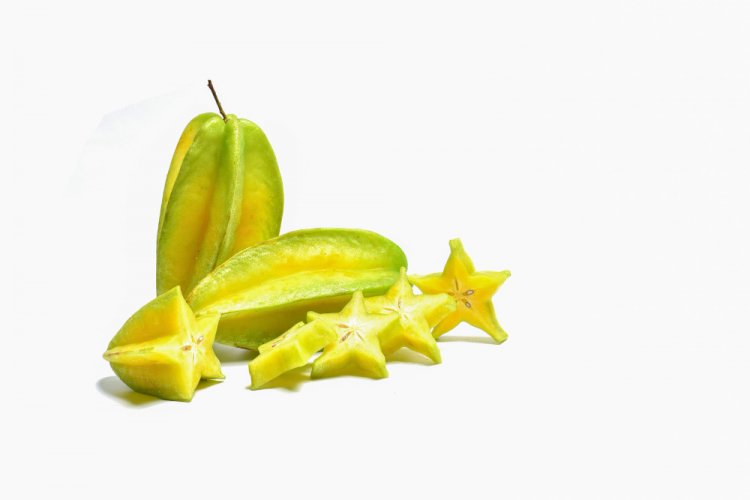The Fascinating World of Carambola Fruit: A Comprehensive Guide
Carambola, also known as starfruit due to its unique shape when sliced, is a tropical fruit native to Southeast Asia. Scientifically known as Averrhoa carambola, this exotic fruit belongs to the Oxalidaceae family and is widely cultivated in regions with warm climates. With its distinct flavor, attractive appearance, and nutritional benefits, carambola has gained popularity not only in its countries of origin but also in various parts of the world. In this comprehensive guide, we'll delve into the origins, characteristics, cultivation, culinary uses, and health benefits of the carambola fruit.

Origins and Distribution
Carambola is believed to have originated in Sri Lanka and Indonesia, and its cultivation dates back to ancient times. Over the centuries, it has spread to other tropical regions of the world, including Southeast Asia, India, the Caribbean, South America, and parts of Africa. Today, countries like Malaysia, Thailand, the Philippines, India, and Brazil are among the leading producers of carambola.
Characteristics
Appearance:
The most distinctive feature of the carambola fruit is its star-like shape when sliced horizontally. The fruit typically ranges from green to yellow when ripe, with five prominent ridges running along its length, giving it a star-shaped cross-section. The flesh is juicy and crisp, with a texture similar to that of grapes.
Flavor:
Carambola offers a unique blend of sweet and tangy flavors, reminiscent of a combination of apple, pear, and citrus fruits. The taste can vary slightly depending on the cultivar and ripeness of the fruit, but it generally has a refreshing and mildly acidic profile.
Varieties:
There are two main types of carambola: sweet and tart. Sweet varieties, such as Arkin and Sri Kembangan, have a higher sugar content and are often eaten fresh or used in desserts. Tart varieties, like Demak and Maha, have a more acidic taste and are suitable for cooking or making preserves.
Cultivation
Carambola trees thrive in tropical and subtropical climates, where they require ample sunlight, well-drained soil, and regular moisture. They are relatively hardy and can tolerate brief periods of drought, but frost can damage or kill the trees. Propagation is commonly done through seeds or grafting onto rootstocks of related species.
The trees typically start bearing fruit within two to three years of planting, with peak production occurring between five and seven years. Carambola trees are prolific producers, yielding fruit year-round in regions with consistent warm temperatures.
Culinary Uses
Fresh Consumption:
Carambola is often enjoyed fresh, either on its own or as part of fruit salads and desserts. Its visually appealing star-shaped slices make it a popular garnish for various dishes and beverages.
Cooking:
Tart varieties of carambola are suitable for cooking and are used in both savory and sweet dishes. They can be stewed, pickled, or incorporated into sauces, chutneys, and curries. Carambola juice is also used as a flavoring agent in beverages and cocktails.
Preserves:
Due to its high acidity, carambola is well-suited for making jams, jellies, and preserves. These products can be stored for extended periods and are enjoyed as spreads or toppings for bread, crackers, and pastries.
Health Benefits
Nutritional Profile:
Carambola is low in calories but rich in essential nutrients, including vitamin C, vitamin A, potassium, and dietary fiber. It also contains antioxidants like flavonoids and phenolic compounds, which help combat oxidative stress and inflammation in the body.
Digestive Health:
The fiber content in carambola promotes digestive health by supporting regular bowel movements and preventing constipation. It also helps maintain a healthy balance of gut bacteria, which is beneficial for overall digestive function.
Immune Support:
Vitamin C, abundant in carambola, plays a crucial role in supporting the immune system by enhancing the production of white blood cells and antibodies. Regular consumption of carambola may help strengthen the body's defenses against infections and illnesses.
Antioxidant Properties:
The antioxidants present in carambola help protect cells from damage caused by free radicals, which are unstable molecules linked to various chronic diseases, including cancer and heart disease. Including carambola in your diet may contribute to overall health and well-being.
Precautions
While carambola offers numerous health benefits, it's important to note that it contains oxalic acid, which can be harmful to individuals with kidney problems. People with kidney disease or a history of kidney stones should exercise caution and limit their intake of carambola to avoid potential complications.
In conclusion, Carambola is not only a visually striking fruit but also a delicious and nutritious addition to any diet. Whether enjoyed fresh, cooked, or preserved, its unique flavor and versatility make it a favorite ingredient in culinary creations around the world. With its array of health benefits and relatively low calorie content, carambola offers both taste and wellness in every bite. So, the next time you come across this tropical gem, don't hesitate to indulge in its starry goodness!
#Carambola #Starfruit #TropicalFruit #ExoticFruit #HealthyEating #Nutrition #CulinaryCreations #Wellness #HealthBenefits #FreshFruit #CookingWithCarambola #FarmToTable #TropicalFlavors #DeliciousAndNutritious #FruitSalad #Desserts #HealthyDiet #GutHealth #ImmuneSupport #Antioxidants #KidneyHealth #FoodPrecautions #TropicalGem #CulinaryAdventure #FruitLover #FoodieLife #HealthyLiving
Disclaimer:
The information provided in this article is for educational purposes only and should not be considered medical advice. If you have any health concerns or are experiencing symptoms, it is important to consult with a healthcare professional, such as a doctor or clinic, for proper diagnosis and treatment. Always seek the advice of your doctor or other qualified health provider with any questions you may have regarding a medical condition. Do not disregard professional medical advice or delay in seeking it because of something you have read in this article.
What's Your Reaction?





















